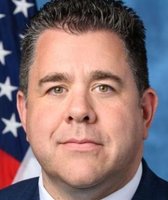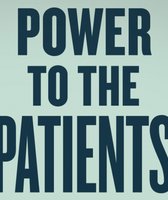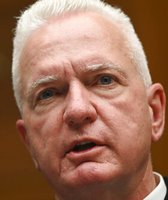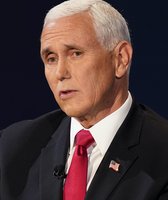Stand up for the facts!
Our only agenda is to publish the truth so you can be an informed participant in democracy.
We need your help.
I would like to contribute
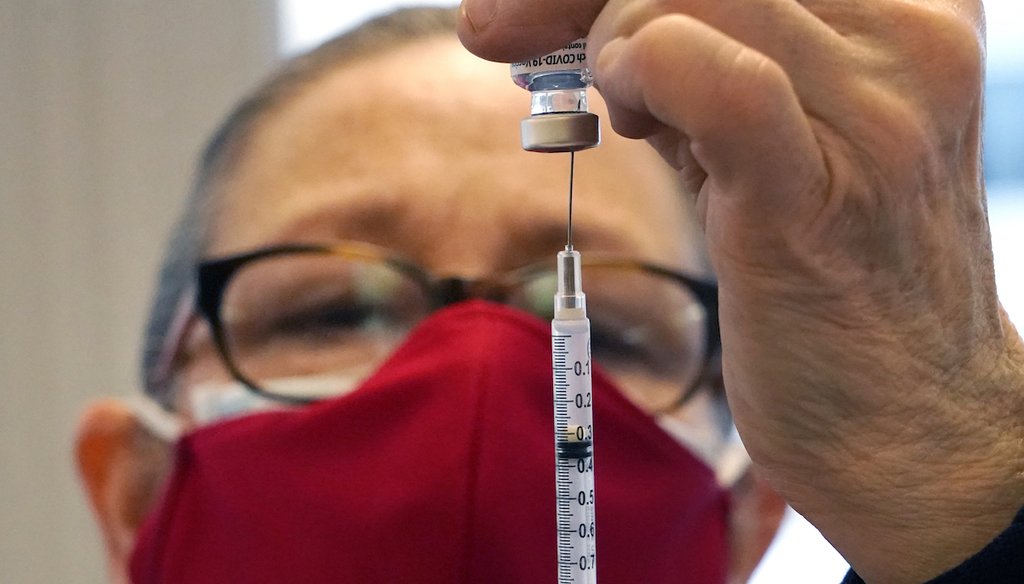
Healthcare volunteer Melissa Lowry prepares a COVID-19 vaccine at a regional vaccination site in Massachusetts. (AP Photo/Elise Amendola)
If Your Time is short
- Even as the pace of vaccination against COVID-19 has steadily accelerated, the frustration felt by people unable to secure an appointment hasn’t waned.
- A key concern is the difference between the numbers of administered and shipped doses. The record-keeping and reporting from the various medical providers within states can be slow.
- Pfizer and Moderna had contracted to deliver approximately 120 million doses by the end of March, which was enough for 60 million people. So, based on CDC guidelines, it was clear that supplies would be limited into the spring.
Even as the pace of vaccination against COVID-19 has steadily accelerated — hitting an average of 1.3 million doses a day in the last days of January — the frustration felt by many of those unable to secure an appointment hasn’t waned.
Why, they wonder, can’t I get one if 100 million shots will soon be administered?
Of course, the answers aren’t simple. Rules keep changing. Data about the number of vaccines delivered and administered — backed by computer systems that often can’t efficiently exchange information with one another — lag. Sign-up systems are clunky and balkanized.
But here’s the real bottom line: Demand far exceeds supply — at least for the moment.
Here are four things to know:
1. Many states don’t know exactly where the doses are, and the feds don’t either.
According to the Centers for Disease Control and Prevention, nearly 56 million doses of the Moderna and Pfizer-BioNTech vaccines were distributed and 33.9 million administered by the first week in February.
Still, questions swirl around the difference between administered and shipped doses. Some have likely reached people’s arms, but the record-keeping and reporting from the various medical providers within states can be slow.
In California, where the rollout per capita has trailed other states’ progress, frustration with tracking doses led officials to name one large health insurer — Blue Shield of California — to coordinate allocation, replacing a strategy that relied on multiple agencies, including health departments, health systems, hospitals, and the Department of Corrections and Rehabilitation.
Health and policy experts, too, express confusion.
"It’s very opaque to many of us," said Dr. Amesh Adalja, a senior scholar at the Johns Hopkins Center for Health Security, who is following the rollout closely. "The CDC tracker shows how many are distributed and how many are given. Everything else is ephemeral and hard to pin down."
For example, Biden administration officials have maintained that they hold a two- to three-day supply in reserve, but Adalja said it isn’t clear how many doses that represents.
The administration announced plans to increase shipments to states for a few weeks in February from approximately 8.6 million doses a week to 10 million. But medical providers still may not know week to week how much they will receive from the state.
"There’s a lot of unpredictability," Adalja said. "You can’t track the vaccine the way you track an Amazon package. I have a colleague who works with hospitals taking deliveries and they themselves are not understanding when they will get vaccine."
Despite the problems, the U.S. has vaccinated just over 8.2% of the population, putting it about sixth in the world, according to a tracker maintained by The New York Times. And, according to a Bloomberg report, more people in the U.S. had received at least one of the two-shot regimen by early February — 33.9 million — than the number of reported cases, 26.3 million, although that number is likely an undercount.
"The percentage of the population vaccinated in a relatively short period is pretty good," said Dr. Marcus Plescia, chief medical officer for the Association of State and Territorial Health Officials.
The main concern, he added, is the difference between shipped amounts and administered dose: "That’s where there’s some controversy."
He suspects much of the discrepancy involves delays in entering information into state vaccine data systems, "which are pretty challenged and haven’t been invested in in decades."
2. Simple math signaled the first few phases would quickly exceed available doses.
After deliberating on the fastest way to roll out the vaccines — and trying to foster equity among groups — the Advisory Committee on Immunization Practices issued a report in late December recommending guidelines to the CDC guidelines on prioritizing people.
The first group, called "1a," should include front-line health care workers and residents and staff in long-term care facilities, totaling an estimated 24 million people, the committee said. Those vaccinations began in December, when Pfizer and Moderna were set to deliver about 45 million doses, or enough of the two-dose regimen for 22.5 million people.
Next in line: people who deal with the public in essential jobs, such as first responders, grocery clerks and educators, as well as residents age 75 and up.
That "1b" group, when added to the first, brought the total potential number of people eligible for vaccination to 73 million.
Those numbers exceeded the approximately 120 million doses that Pfizer and Moderna had contracted to deliver by the end of March, which was enough for 60 million people. So, even with reported vaccine hesitancy among some groups, it was clear at the start that supplies would be limited into the spring.
Of course, states did not have to follow the recommendations. And many did not.
Some states moved early to expand priority to people 65 and older. There are an estimated 53 million in that group, according to the advisory committee, although some may have overlapped with the first phase.
One of the first states to loosen eligibility was Florida, where Republican Gov. Ron DeSantis in late December said he would open up vaccines to anyone age 65 or older, and moved essential workers, such as grocery clerks, further down in the rollout. Long lines immediately formed, with seniors sometimes waiting overnight in front of health care facilities in hopes of getting a shot.
"Once you tell everyone over 65 they can get it, it’s difficult to take that back," said Plescia. "But it got their hopes up, and they think it’s just a matter of perseverance. The fact is, there isn’t enough vaccine to do it and won’t be for at least several more weeks."
3. The problem grew in the waning days of the Trump administration.
Further complicating the situation, in January the outgoing Trump administration urged states to consider expanding eligibility to all people 65 and older.
"It’s simply much easier to manage allocating vaccines and appointments to everyone 65 and over rather than narrower, more complex categories," Alex Azar, then-secretary of Health and Human Services, said Jan. 12 at an Operation Warp Speed press conference.
At the time, the administration had contracts in place to buy 400 million doses, following a Dec. 23 decision to buy an additional 200 million doses from Moderna and Pfizer. The contract called for delivery by the end of June or July.
Azar’s comments played into an ongoing debate in public health circles between those who advocated strictly following the rollout guidelines to try to maintain equity while balancing limited supplies, and others who said it was important to vaccinate as many people as possible, as quickly as possible, even if that meant changing the guidelines.
Don’t wait, Azar urged states, for everyone in group 1a to be vaccinated before moving on to the next group. And, he added, "we’re now making the full reserve of doses we have available for order."
But, as it turned out, the Trump administration had already dispersed its reserve supply — and shipments were not about to increase.
"Some states stayed the course as far as their original priority groups, but others instantly opened up to be consistent with federal guidelines," said Katie Greene, a visiting policy associate at the Duke-Margolis Center for Health Policy and co-author of a report to the National Governors Association that outlined the CDC’s guidance on vaccine rollout. "In some ways, it has helped speed up vaccinations. In other respects, there’s a fundamental limit to the number of vaccines available."
Going to over-65 eligibility "wasn’t a mistake," if regions were delaying vaccinations while waiting for those in the first groups to overcome hesitancy about getting the shots, said Adalja. In some cases, "the initial groups were an obstacle for getting vaccines into arms."
Yet some experts said the move falsely hyped people’s expectations of when they would get the vaccine.
Revising the priority groups potentially furthered inequity in distribution, benefiting those best able to work the internet, or their connections, or those who could drive long distances to mass vaccination centers. Many vulnerable people who are older, poorer, in worse health or in public-facing jobs with little time off now had to compete with a far larger group of eligible folks when trying to get in line.
"The politics have trumped science," said Scott Ratzan, a distinguished lecturer at the City University of New York graduate school of public health. "We started with Florida lowering to 65 as fast as it could, which had to do with the politics of who the voters are. Now Florida cannot match the demand for vaccines with either the supply or the need."
4. Help is on the way, but patience is required.
Although vaccine supply is limited now — and likely will be for weeks — good news is on the horizon.
Pfizer and Moderna are contracted to deliver about 200 million doses by the end of March, though both may need to increase deliveries to meet that goal.
Between the two of them, another 200 million doses are expected to be fully delivered by July, under the December purchase by the Trump administration. Pfizer recently told investors it was on track to deliver its doses by the end of May, two months early, mainly because an additional dose of vaccine can be extracted from each vial with special syringes.
Finally, Biden administration officials said in late January they are close to a deal to purchase another 200 million doses from the two manufacturers, although a final agreement has not been announced. If it goes through, the U.S. will receive 600 million doses in all this year from the two manufacturers, enough for 300 million residents.
And there is likely another vaccine in the wings. Johnson & Johnson on Thursday asked the Food and Drug Administration for emergency use authorization for its vaccine and said it could provide 100 million doses to the U.S. by the end of June. That’s enough of the one-shot product for 100 million people.
"We won’t see the impact until spring and summer. Right now, the supply is where it is," said Adalja at Johns Hopkins. "These bigger amounts will get us over the hump of getting eligible populations vaccinated. It’s clear to everyone that vaccination will continue through the summer."
Patience will be key, said Plescia at the state health officers association: "We’ve got to readjust people’s expectations. The public is not going to get vaccinated for a while. Even for people over 65, it will be a little while."
UPDATE: This story was updated after initial publication to include Johnson &Johnson’s announcement that it would seek an emegency use authorization for its vaccine.
Our Sources
Telephone interview with Amesh A. Adalja, senior scholar, Johns Hopkins Center for Health Security, January 28
Telephone interview with Scott C. Ratzan, distinguished lecturer, CUNY Graduate School of Public Health and Health Policy, January 29
Telephone interview with Katie Greene, visiting policy associate at the Duke-Margolis Center for Health Policy, Feb 1
Telephone interview with Marcus Plescia, chief medical officer, Association of State and Territorial Health Officials, Feb. 1
The New York Times, Tracking Coronavirus Vaccinations Around the World, accessed Feb. 2
Bloomberg, More Than 108 Million Shots Given: Covid-19 Tracker, Feb. 3
The Centers for Disease Control and Prevention, Covid Data Tracker, accessed Feb. 2
The Centers for Disease Control and Prevention, The Advisory Committee on Immunization Practices’ Updated Interim Recommendations for Allocation of Covid-19 Vaccine, United States, December 2020, Jan. 1
National Governors’ Association, Allocating Covid-19 Vaccines in Initial Phases of Distribution: Federal Recommendations and Considerations for States, Dec. 23, 2020
Rev.com, "Operation Warp Speed Covid-19 Press Conference Transcript by Defense Officials," Jan. 12
CNBC, Pfizer plans to deliver 200 million doses of Covid vaccine to U.S. by May, sooner than expected, Feb. 2
Other links provided in the story.


